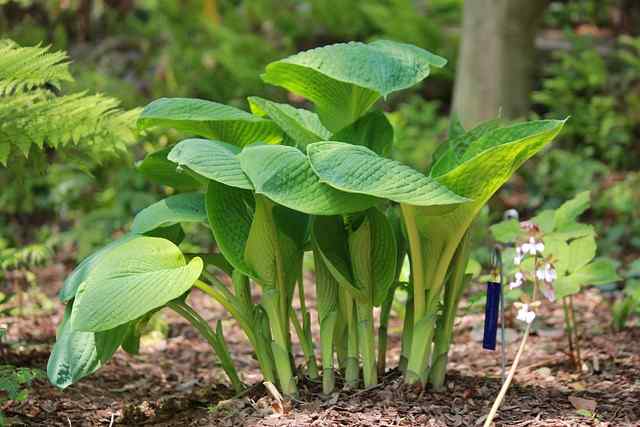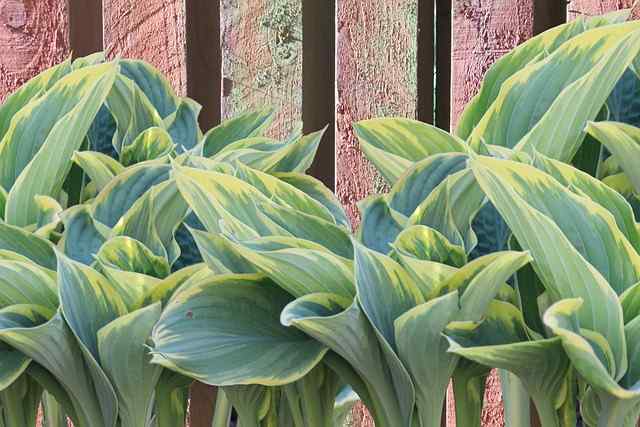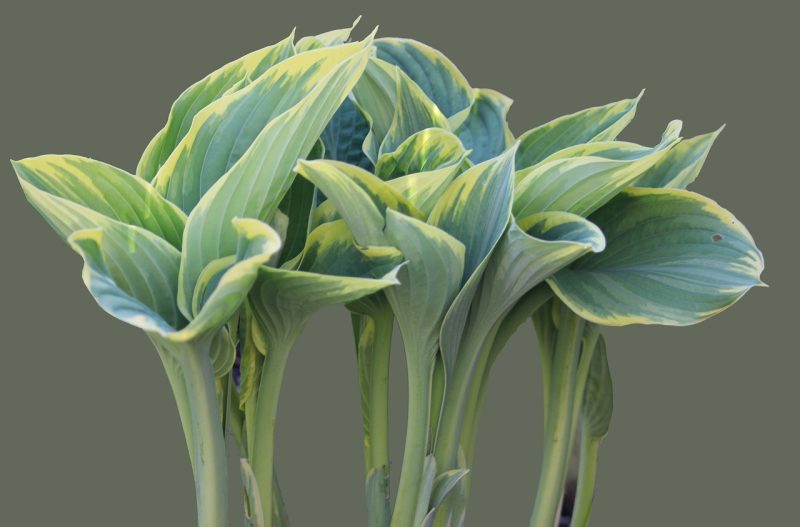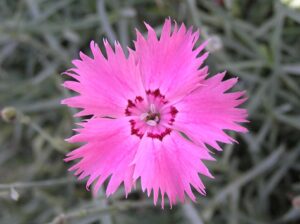In this comprehensive guide, we’ll dig into the growth characteristics of hostas, factors affecting their emergence, seasonal care tips, and much more. Whether you’re an experienced gardener or a novice plant lover, we’ve got you covered with everything you need to know about when hostas come up.
The Emergence of Hostas: Timing is Everything

When Do Hostas Start to Sprout?
Typically, hostas begin to emerge in the spring as temperatures gradually increase. In most temperate regions, you can expect to see their shoots breaking through the soil anywhere from late March to mid-April. However, the exact timing can vary based on several factors, including:
Climate Zone: Depending on your USDA hardiness zone, the emergence time can differ substantially. For example, in warmer southern climates, hostas may start sprouting as early as late March, while in cooler northern zones, it could be as late as early May.
Soil Temperature: Hostas are responsive to soil warmth, generally sprouting when the soil temperature reaches about 50°F (10°C). You can measure this using a soil thermometer to determine when the right conditions are present.
Microclimates: Your garden’s specific conditions, such as sunlight exposure, wind protection, and surrounding flora, can also dictate when hostas appear. Areas that receive warmth from reflected sunlight or are sheltered from the cold may see earlier growth.
How to Encourage Healthy Growth
While patience is a virtue in gardening, there are some strategies you can employ to encourage your hostas to come up strong and healthy.
Mulching: Applying a layer of organic mulch can help regulate soil temperature and moisture retention. This can foster a favorable environment for hostas, facilitating an earlier sprout.
Soil Preparation: Hostas thrive in well-draining, rich soil. Preparing your garden beds with compost or leaf mold before the growing season can provide the right nutrients and conditions for your hostas when they finally emerge.
Watering: Ensuring your plants are adequately hydrated before their emergence can help the young shoots push through the soil more easily. A light watering before the expected sprouting period can make a significant difference.
Signs of Life: What to Look For
Once the last frost has passed, keep an eye on your garden. You’re looking for little green spears to break through the frost-heaved ground. This is your signal that your hostas are finally awake from their winter dormancy. The initial leaves are often pale in color but will quickly darken and unfurl, forming the striking foliage we associate with these plants.
Optimal Conditions for Hostas

While understanding when hostas come up is essential, knowing their ideal growing conditions will help you make the most of their beauty throughout the year. Hostas are quite versatile but thrive best in specific settings.
Light Requirements
Hostas prefer partial to full shade conditions, although certain varieties can handle more sunlight. Locations that provide early morning sunlight and afternoon shade are ideal for most hostas. Too much sunlight can scorch their leaves, while too little can stunt their growth.
Soil and Drainage
As mentioned earlier, these perennials flourish in well-draining, loamy soil enriched with organic matter. Proper drainage is crucial; hostas can suffer from root rot if their roots sit in waterlogged conditions. Conducting a simple drainage test by checking how quickly water absorbs into your soil can help ensure that your hostas have the ideal growing conditions.
Watering Needs
During their early growth phase, hostas require consistent moisture. Once established, they are relatively drought-resistant, but for optimal growth, regular watering is recommended, especially during dry spells. Ensuring adequate moisture helps develop robust leaves that can resist pests and diseases.
Fertilization Strategy
To encourage vigorous growth after they emerge, consider implementing a balanced, slow-release fertilizer in early spring. This will provide essential nutrients, especially nitrogen, which is critical for leaf development.
Seasonal Care for Hostas

Understanding their timing and growth conditions is just the start. Caring for hostas through the seasons can ensure these stunning plants flourish year after year.
Spring Care
As hostas make their first appearance in spring, it’s a good time to:
Clean Up: Remove any dead leaves or debris from the previous season to prevent disease and give the new growth room to breathe.
Fertilize: A light application of fertilizer will boost their nutrient intake.
Water: Ensure they have adequate moisture, especially during dryer spells.
Summer Care
During the summer months, hostas will reach their full size and may produce flowers:
Watering: Continue to monitor soil moisture. Hostas usually require more water during the hot summer months.
Deadheading: If you wish for a more refined garden appearance, deadhead spent flowers early to encourage continued growth, keeping the plant’s energy from going into seed production.
Autumn Care
As we shift into fall, hostas prepare for dormancy.
Once Frost Hits: Cut back any spent or damaged foliage. Leaving some of the leaves can sometimes be beneficial as they can provide some winter protection for the roots.
Mulching: Apply extra mulch to protect the roots from frost and harsh winter temperatures.
Winter Care
Hostas are perennial and can survive winter dormancy, especially in hardiness zones 3-9.
Protection: A layer of mulch can insulate roots from freezing conditions.
Avoid Overwatering: Make sure the soil isn’t overly saturated before the ground freezes, as this can lead to root rot.
Popular Hosta Varieties and Their Emergence Times

Understanding that the emergence of hostas can vary by variety can help you make informed choices in your garden. Here are some popular types and their emergence characteristics:
Hosta ‘Patriot’: This classic variety is appreciated for its striking white margins. Patriot typically emerges in early to mid-spring, adding a pop of color to the garden early on.
Hosta ‘Blue Angel’: Known for its stunning blue-green leaves, this variety tends to sprout later in spring. It’s crucial to plan your garden accordingly to allow for all varieties to complement one another.
Hosta ‘Fried Green Tomatoes’: This unique cultivar sports a vibrant yellow leaf that turns green as the season progresses. It usually shows up in mid to late spring and can be a delightful addition to traditional green foliage.
Hosta ‘June’: A fan favorite for its changeable foliage color and stunning blue and green variegation, it emerges in the second half of April, often coinciding with the spring blooms of other perennials.
Hosta ‘First Frost’: Worth the wait, known for its striking frosted edges, this variety takes its time and often doesn’t show up until the end of April.
FAQs About Hostas: What Every Gardener Should Know
As we have explored the various aspects of when hostas come up and how to care for them, you may still have some lingering questions about this versatile plant. Here are a few FAQs that might address common concerns.
Do Hostas Come Up Every Year?
Absolutely! Hostas are perennial plants, meaning they will regrow annually. However, their vigor and size can depend on the conditions in which they are grown.
Will Frost Hurt My Hostas?
Hostas are somewhat frost-tolerant, with established roots able to withstand light frosts. However, new shoots are delicate and can be damaged by late frosts. Covering your emerging hostas with frost cloth during unexpectedly cold nights can provide some protection.
Can You Grow Hostas in Containers?
Yes! Hostas are excellent for container gardening. Just ensure that the pots have adequate drainage and that you keep them well-watered and mulched, especially in warm weather.
What Pests or Diseases Do Hostas Face?
Common threats include slugs, snails, and deer. Implementing integrated pest management techniques, such as introducing beneficial insects or using copper tape, can help deter these pests. Fungal infections, particularly leaf spot, can occur in overly damp conditions.
How Big Do Hostas Get?
Sizes vary dramatically based on the variety, with some staying compact at 1-2 feet, while others can grow up to 4 feet wide. Understanding the specific requirements of each variety will help you choose the best fit for your space.
Wrapping Up: The Joy of Hostas in Your Garden
In conclusion, hostas are an excellent choice for any gardener looking to add lush greenery and texture to their landscape. Understanding when hostas come up and how to care for them through their seasonal cycles enhances the gardening experience. With proper care, these hardy perennials will return year after year, delighting you with their beauty and elegance.





